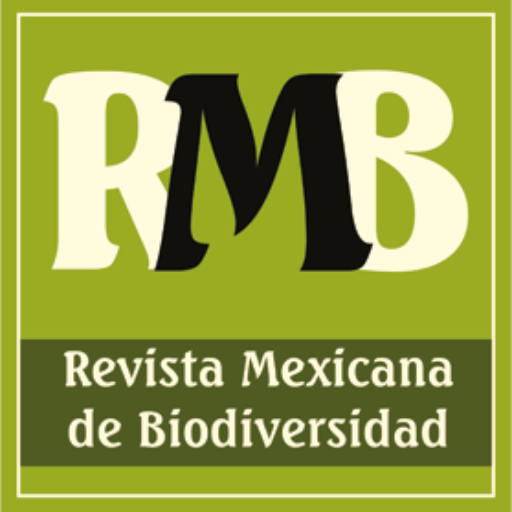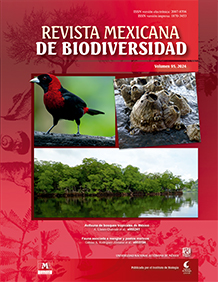


Editorial guidelines
Guidelines for authors
Conditions of acceptance. The manuscripts will be received with the understanding that all authors have approved submission. The results or ideas contained in papers must be original, that is, the work has not been published previously or it has not been submitted simultaneously elsewhere for publication. Either articles or notes are evaluated by at least 2 anonymous reviewers selected by the associate editor.
Editorial process. Rejected manuscripts will be reconsidered only by editor´s in chief invitation. When papers are revised, the manuscript and the reviewers’ suggestions will be returned to the author in order to carry out the pertinent modifications. If the last version is not received within 3 months, the paper will be considered withdrawn from publication.
Publications:
Articles. Original papers, in Spanish or English, about systematics, biogeography, ecology and evolution of taxa from the Americas.
Research notes are not accepted in this journal at the moment.
Species lists. Will be received only if they include new records for the region and a detailed analysis of the information.
Book reviews. Review of books recently published will be considered.
Points of view. Brief manuscripts under 5 pages where the author gives his (her) opinion on biological themes of current interest, based on recent scientific literature.
Revision articles. Manuscripts revising the state of knowledge of biological themes of current interest, these will be received by invitation only.
Obituaries. Distinguished biologists obituaries will be accepted.
Guidelines for authors: the manuscripts must be submitted in electronic version (Word or RTF format) in the web page:
For additional contact:
Instituto de Biología, UNAM, Revista Mexicana de Biodiversidad, Apartado postal 70-153, C.P. 04510 México, D.F. Tel. (5255) 56 22 91 67; Fax. (5255) 55 50 01 64
Editor in chief (Fernando Álvarez): falvarez@ib.unam.mx
Technical editor (Ma. Antonieta Arizmendi): aarizmen@ib.unam.mx
Referees. Authors will suggest at least 2 potential referees for their manuscript by sending complete data of the candidates: name, working institution, and e-mail address. The associate editor will be responsible for the final selection of referees.
Before submiting a manuscript to Mexican Magazine of Biodiversity, authors must be sure to have followed these guidelines:
● If the manuscript is written in English and the authors are not English speakers, an expert should review the use of the language before being sent to the Mexican Magazine of Biodiversity. We recommend American Journal Experts:
http://www.journalexperts.com/
● A cover letter must be sent together with the manuscript explaining the relevance of the research and pertinence of publication in this journal; including the 2 potential referees.
● Manuscript must be saved in a single file Word or RTF format, with tables at the end of text. Figures will be sent on a separate file.
● Text should be typed double-spaced, with all margins at least 25 mm wide.
● Letter type must be Times New Roman 12 point throughout the entire manuscript.
● Paragraphs will have a 2 cm indentation.
● Do not use hyphenation, neither justify right-hand margin.
● Do not leave extra space between paragraphs in the text.
● All lines and tables must be numbered consecutively.
Scientific names
● Scientific names must be typed completely for the first time used in the text. Subsequently, the generic name is to be abbreviated, except when it is used at the beginning of a sentence or in headings.
● Genera and species namesshould be in italics, not underlined.
● Author and date citations for scientific names are necessary only in systematic works. In these cases authors and dates must be cited only the first time the name appears in the abstract and in the text.
● The manuscripts must adhere to the International Code of Nomenclature.
● Author and date citations used only as authorities for scientific names should not be included in the Literature cited section.
Articles. The manuscripts must be organized in the following format:
● All pages should be numbered, beginning with that of the title.
● Running head. Should be provided at the beginning of the first page,, it will consist of the authors’ last names (use “et al.” for more than 2) and a short title not exceeding 60 characters including spaces.
Example:
Gutiérrez et al.- Hirudinidae of the Mexican Pacific Ocean.
● Title. If the manuscript is in English, the title in English must appear at the beginning of the left hand margin in bold letters. Provide a Spanish version of the title starting in a new line. If the manuscript is in Spanish, the title in this language should appear first.
– Titles should be short and descriptive. Do not use author and date citations for scientific names.
– In the title only, numbers less than 11 are spelled in full.
– Numbers indicating papers in a series will not be accepted.
● The titles are followed by the authors’ names, written in a new line, beginning at the left hand margin. With an asterisk, indicate the corresponding author.
NOTE: the authors that appear in the manuscript that is submitted and the order in which they are presented, must remain unchanged throughout the editorial process, except in very particular situations and with the express authorization of the editor-in-chief.
● Next, in a new line, provide the complete addresses, including the e-mail addresses of all participating authors, showing with an * the e-mail of the corresponding one. Addresses must be related to the authors’ names using lowercase letters in superscript.
● Abstract. Provide an abstract of the paper that does not exceed 200 words. It must include the objective, methods used, conclusions, and significance of the study. This section is headed with the word “Abstract” at the beginning of the line, in bold letters.
Text must not be subdivided, and will not contain literature citations.
● Keywords. In a separate line, provide a maximum of 8 key words or expressions of no more than 3 words, not included in the title.
● Resumen. The manuscript must include a Spanish version of the Abstract, beginning with the word “Resumen”, as well as “Palabras clave” instead of Keywords, formatted in the same style as described above.
● Introduction. The title for this section (also for Material and methods, Results, Discussion, and Acknowledgments) must be typed in bold letters starting at the left hand margin of the page (without indentation).
– Subdivided text will not be accepted in this section. Subsecuent sections can be subdivided; subtitles must go in italics, not bold type and text must follow in the same line.
● Material and methods. This section should provide enough information as to permit the evaluation and/or repeatability of the study.
● Results. This section should contain new and concise information.
– Tables and figures are to be used as appropriate, but information herein should not be repeated in the text.
– Avoid detailing methods and interpreting results.
– Taxonomic studies have a particular format, the Results section is replaced by a section headed “Description”.
– Start at the left-hand margin of the line with the italicized scientific name of the taxon studied. Authorities, dates and reference to figures follow.
– Initiate the description as a new paragraph. The text is followed with a “Taxonomic summary”, that comprises a listing data: the locality, the accession numbers of collections where specimens were deposited, and etymology (in new species cases).
– The taxonomic summary is followed by a “Remarks” section, which replaces the discussion of other articles and makes comparisons to similar or related taxa. This sequence of subsections is repeated for each taxon.
– If in taxonomic manuscripts the description section does not include all of the results, the format outlined is to be incorporated into the usual section of Results.
– In those cases where new species are described, types or paratypes of the new taxa must be deposited in ta recognized institutional biological collection or museum.
– Museum accession numbers for appropriate type material and for voucher specimens are required. Frozen tissues deposited in a museum, and DNA sequences included in data bases must be provided with accession numbers. For photo collection records, accession numbers from a recognized institutional collection must be provided.
– Collector’s permit data will be required in certain cases.
● Discussion. An interpretation and explanation of the relationship of the results to existing knowledge should appear in this section.
● Acknowledgements. They should be concise. Ethics require that colleagues be consulted before being mentioned in this section.
● References in the text. Citations are arranged alphabetically.
– All references cited in the text must appear in this section, and vice-versa.
– Citations of unpublished studies or reports are not acceptable.
– Style of citations in the text should be as follows:
(Aguilar, 2000) or Aguilar (2000) …
(Aguilar & Camacho, 2001) or Aguilar and Camacho (2001)
(Aguilar et al., 2002) or Aguilar et al. (2002)
(Aguilar, 2000; Juárez, 1994; Méndez, 1954)
– In alphabetical and chronological order (for the same author)— (Juárez, 1958, 1960a, 1960b; Méndez, 1954)).
NOTE: Do not use italics for: et al.,
● Style in the References listed (APA).
– Journal article:
Brailovsky, H., & Camacho, A. (2003). Especies nuevas de Nematopus (Hemiptera: Heteroptera: Coreidae: Nematopodini) centro y sudamericanas. Anales del Instituto de Biología, Universidad Nacional Autónoma de México, Serie Zoología, 74, 135–152.
– Book:
Felsenstein, J., Loute, Y., & Vargas, T. (2003). Inferring Phylogenies. Sunderland, Massachusetts: Sinauer.
– Chapter in a book:
Hillis, D. M., Mable, B. K., Larson, A., Davies, S. K., & Zimmer, E. A. (1996). Nucleic acids IV: sequencing and cloning. In D. M. Hillis, C. Moritz, & B. K. Mable (Eds.), Molecular systematics (pp. 321–383). Sunderland, Massachusetts: Sinauer.
– Thesis:
Paredes, E. L. (2000). Fauna helmintológica de Rana vaillanti en la región de Los Tuxtlas, Veracruz, México (Ph.D. Thesis). Facultad de Ciencias, Universidad Nacional Autónoma de México. México, D. F.
– Electronic references:
Wieczorek, J. (2001). MaNIS/HerpNetORNIS Georeferencing guidelines. University of California, Berkerley. Retrieved on July 07th, 2014 from: http://manis.mvz.berkeley.edu
– Note that abbreviations are not used for titles of serial publications, that spaces appear between initials, and that electronic references show the date of last consultation.
– Footnotes. These are not permitted in the text. Those for tables are typed directly under the table to which they pertain.
● Tables. Tables are used only to present data that cannot be incorporated conveniently into the text.
– These are included at the end of the text (following the literature cited section), numbered in a continuous series and referenced, in sequence, in the text.
– Captions are typed above the data on the same page.
– Avoid horizontal lines in the body of the table; vertical lines are not permitted. Tables must be designed to fit in one page. Photo-reductions are not acceptable.
● Figures. These are numbered consecutively in the same sequence mentioned in the text. All figure captions are to appear consecutively on a separate file (low resolution PDF or Word in the first version of the manuscript).
– Color figures are accepted with no charge for the author.
– The captions are written in paragraph style, beginning with the word “Figure” and the corresponding number.
– Electronic version of figures should be sent in TIFF format, with a resolution of 300 dpi.
Front cover illustration. Authors are invited to send photographs that are related with their manuscript in order to participate in the front cover illustration selection process.

